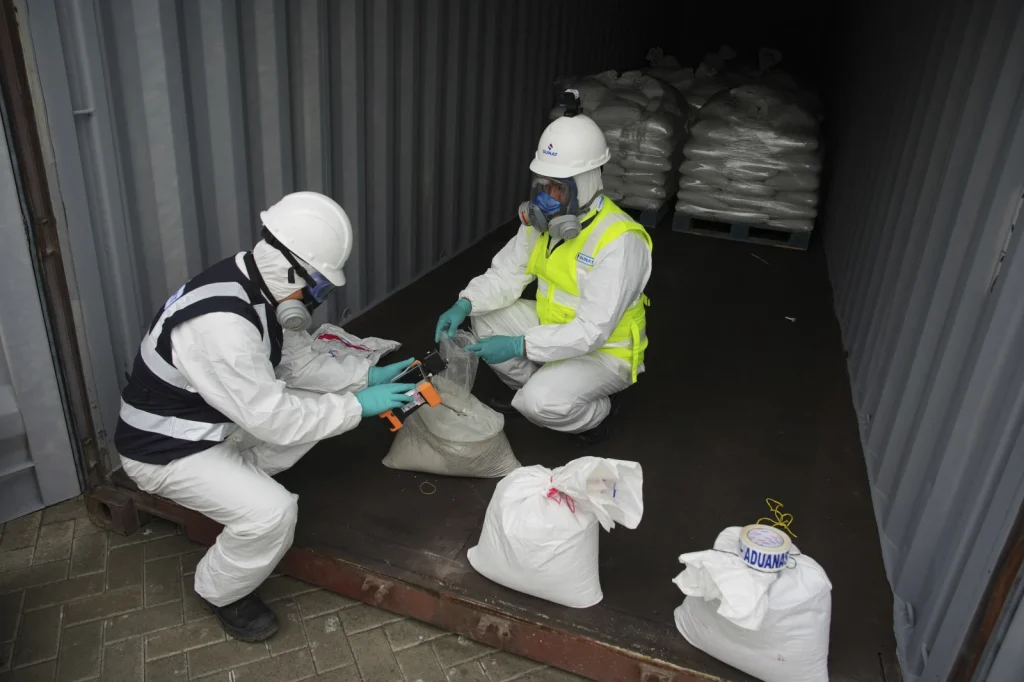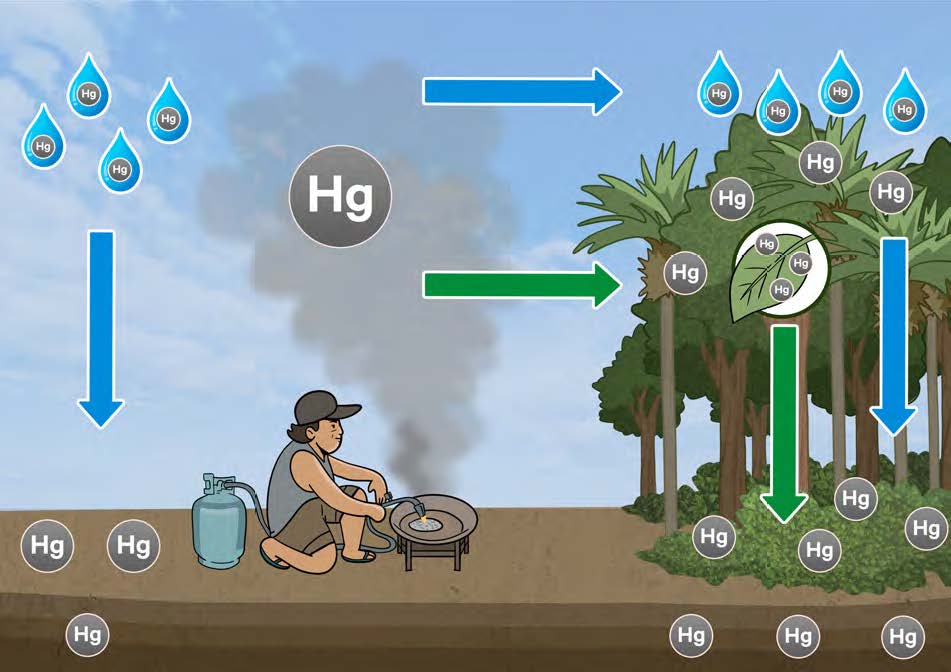Fernandez Assists in Record-Breaking Illegal Mercury Seizure
Incident Underscores Links Between Mercury Pollution, Illegal Gold Mining & Organized Crime
Last month, Sabin Center Senior Fellow Luis Fernandez assisted Peruvian customs officials authorities in the seizure of a record-breaking 4-ton shipment of illegal mercury on its way to Peru. Hidden in bags of crushed gravel, it’s the largest mercury seizure ever made in an Amazon country, and one of the largest anywhere in the world. Although the shipment itself is valued at $500,000 Fernandez estimates that the mercury would have been used to illegally produce over 3,500 pounds of gold, worth more than $172 million in today’s market.
As reported by the Associated Press, the shipping container originated in Mexico and was identified by Peru’s Tax and Customs Agency, in part thanks to information supplied by nonprofit watchdog the Environmental Investigation Agency (EIA). US. specialists, including Fernandez, were brought in to confirm the presence of mercury within the bags of gravel.

Funding Transnational Organized Crime
The seizure comes as a result of international intelligence sharing, including ongoing efforts from the EIA, which reported on the growing “gold-mercury-drug” trifecta – a troubling link between illegal mining, transnational crime, and environmental degradation. As gold prices soar, so too do incentives for traffickers to smuggle mercury into the region. According to EIA’s report, organizations including Mexico’s Jalisco New Generation Cartel and the Revolutionary Armed Forces of Colombia (FARC), are directly involved in the illicit trade. EIA estimates that at least $8 billion worth of illegal gold has been produced through the illegally trafficked mercury in the last six years alone.
Fernandez underscored the importance of the seizure, and its implications:
“This isn’t subsistence mining — it’s organized, high-value illicit trade with serious environmental and public health consequences.”
Mercury’s Human and Environmental Impact
Mercury, one of the top ten most dangerous chemicals to public health, is used in small scale and illegal mining operations as an easy but dangerous way to extract gold from ore. As a result of the process, mercury is burned off and released into the air as a toxic vapor, which can travel long distances before depositing into land and water as rain or dust. Meanwhile, leftover mercury is left behind to poison the land or discharged into rivers where it becomes its most dangerous form — methylmercury, which is absorbed by the aquatic ecosystems and ultimately passed up the food chain including to the people who rely on the ecosystem for their food and livelihood.

The human impact is real. Our colleagues at CINCIA recently reported on the alarming mercury levels among residents who live along rivers in Peru’s Loreto region, where 45% of children and 37% of reproductive aged-women tested at dangerously high levels. Mercury poisoning can lead to birth deformities and neurological disabilities, and is especially dangerous to fetal brain development.
News of the seizure has been picked up by several global media outlets including The Washington Post, ABC News, and Bloomberg.
